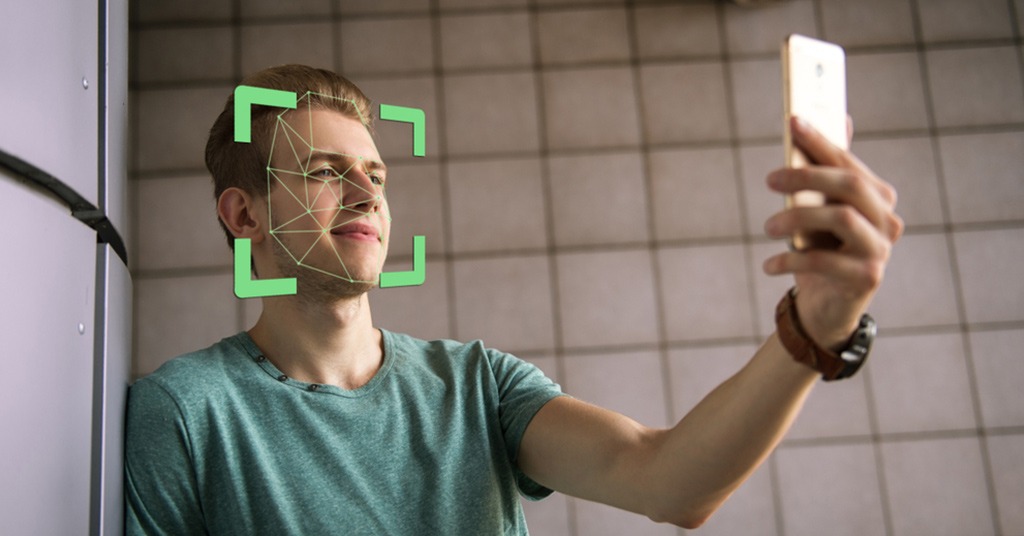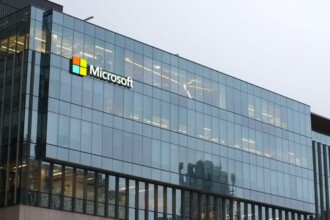How facial recognition technology is transforming daily life

Face recognition technology to change the world. Source: shutterstock.com
Biometrics are used for the identification and authentication of a person from a digital image, or a video frame from a video source.
Facial biometrics works as follows: a 2D or 3D sensor scans a person’s face. It then converts the received information into digital data. Subsequently, a special algorithm compares the scanned image with the one stored in the system database.
Many iPhone X owners are already familiar with the technology since they have access to an embedded Face ID option. However, it is far from the only example of the use of verification systems.
PaySpace Magazine offers you the chance to consider some of the most significant examples of the use of facial recognition technology, as well as learn how this very technology is developing.
Development of the technology
The Pacific Rim is considered to be the region with the most rapid development of this technology. The United States, for instance, currently offers the largest market for the use of this identification system. India and China are also leaders in this industry.
China, in turn, is developing and expanding its video surveillance systems throughout the country. At the end of 2017, 176M surveillance cameras were used. It is expected that by 2020 the number of these devices will increase to 626M.
India is known for Aadhaar, which is the largest biometric database in the world, and the number of users is approximately 1,2B (as of July 2018). The Unique Identification Authority of India (UIDAI) was about to implement new 16-digit Aadhaar numbers, but this decision has not yet been implemented.
The Supreme Federal Court of Brazil has launched a nationwide project, which aims to collect biometric data of residents of the country. The primary goal is to collect a biometric database of 140M citizens by 2020.
IT giants and the technology
In 2014, Facebook announced the launch of DeepFace – a service, which can identify whether two faces on a photo belong to the same person – with an accuracy of up to 97.25%. However, people engaged in the identification test, were 97.53% accurate, which is 0.28% better than the Facebook program results.
In June 2015, Google introduced a new face recognition system called FaceNet. This service showed great results: up to 99.63% accuracy Labeled Faces in the Wild (LFW) dataset, and 95.12% on YouTube Faces DB. Google uses FaceNet in the Google Photos service since the program can sort photos.
A study, conducted by MIT experts in February 2018 revealed that face recognition systems of technology giants such as Microsoft, IBM, and Megvii often make mistakes. In particular, the systems could not correctly identify Negroid women.
In May 2018, it was reported that the American e-commerce giant Amazon began to promote its cloud facial recognition service called Rekognition to law enforcement agencies. The program is able to recognize up to 100 people in one image, matching their faces with tens of millions of people from different databases.
However, in July 2018, the American Civil Liberties Union decided to test the Amazon system. The agency downloaded 25,000 different photos into the system, then uploaded official photos of the 535 members of the US Congress. The program offered to compare the pictures of officials with photos of intruders. As a result, Rekognition found 28 matches. That meant the system identified 28 members of the US Congress as criminals.
Facial recognition in different areas
Law enforcement agencies
Nowadays, law enforcement agencies are actively fighting criminal activity and terrorism, so facial recognition technology is very popular in this area. Aim #1 is the detection and prevention of criminal activity.
Facial recognition is used at airports during customs control, by matching a passport photo with the face of its owner. In 2017, Gemalto, which specializes in digital security solutions, introduced a new customs control system for Charles de Gaulle Airport in Paris based on face recognition technology.
Biometric facial identification is often used by the police, while its use is strictly controlled in Europe. In 2016, “man in the hat”, accused of committing a series of terrorist attacks in Brussels, was caught due to software with an integrated FBI facial recognition system.
In 2017, the South Wales police also used this technology during the UEFA Champions League final.
Chinese law enforcement agencies have developed special sunglasses based on augmented reality and facial recognition technologies. These smart glasses will be able to identify perpetrators by matching a person’s face with one from the criminal DB.
Drones, jointly with aerial cameras, offer an interesting solution for the use of facial recognition. For instance, they can be used in large areas during big public events. According to information from the Keesing Journal of Documents and Identity scientific journal, some drones are able to carry 10 kg cameras, which can identify a prospective criminal at a distance of 800 meters from a 100-meter height (as of June 2018).
Medicine
Technology is prevalent in this area. Due to careful study and analysis of the face, you can:
- make monitoring the consumption of pharmaceuticals by a patient in a more accurate way;
- detect genetic disorders, such as DiGeorge syndrome (up to 96,6% accurate);
- control anesthesia during surgery.
Horeca
In 2017, popular fast-food chain KFC, jointly with the financial company Ant Financial (an Alibaba subdivision), launched an unusual payment service called Smile to Pay. The novelty took place in one of the fast-food establishments in Hangzhou. The system was first introduced in 2015. Jack Ma, the head of Alibaba, presented it at the international exhibition CEBIT.
If you want to order a dish from the menu, you need to do the following steps:
1. enter the mobile phone number, which should be linked to the Alipay wallet;
2. smile at the camera, which is embedded into the biometric terminal.
Then you’d have to confirm your identity as the wallet owner.
Smiling is not just a random requirement. The system needs to understand whether there is a living person or just a photo. The recognition process takes no longer than 2 or 3 seconds.
In 2018, Alibaba’s facial recognition technology was tested in two Marriott hotels, in Hangzhou, and Sanya Province (Hainan Island). The guest must approach a special self-service point to obtain the keys to their room. There, a guest would be asked to scan a passport, specify contact details, and have a photo taken. The system compares the photo in the passport with the face of the guest. If the system confirms that it is the same person, it gives a room’s key card.
However, Marriott is not the only one. The Chinese online apartment rental service Xiaozhu (similar to Airbnb), plans to implement facial recognition technology in its service. In particular, the company is going to replace conventional locks with “smart” ones, endowing them with a facial recognition system. Therefore, they believe that the short-term rental process will become safer and more comfortable. Facial recognition technology will help apartment owner to rent out their houses remotely. Therefore, you will not have to meet guests to give them keys every time somebody books your apartment.
Retail
In 2017, one of the largest retail chains Walmart presented its own facial recognition system. The system is able to determine the mood of the buyer during their shopping trip, as well as a customer’s satisfaction after visiting the supermarket.
Therefore, if the system detects a shopper with a frowning face, the store employees will receive a notification about it. Walmart believes that such innovation can help them to improve the quality of customer service. After all, an employee will be able to respond to the buyer’s dissatisfaction promptly.
The system will also be able to analyze the behavior of customers over a period of time. This new option can compare the emotions of people with the type of goods they buy and how much they spend. This will help to trace the change in customers’ buying habits based on the amount of money they have spent.
In 2015, American retailers were ready to launch facial recognition technology in their stores to prevent theft. However, Walmart was the first to abandon this idea, because the system was unprofitable. In addition, many human rights activists opposed the introduction of such a system in supermarkets, because it violates the privacy of a person.
Nonetheless, the Beijing government believes that facial recognition technology is more secure than scanning fingerprints, retinas, or conventional passwords. Therefore, in 2018, the country’s supermarkets started testing this technology at the cash register.
Shoppers will be able to accomplish goods purchasing at the checkout by self-service in two steps:
1. The buyer must scan the barcodes of all products. A camera, built into the panel of a special terminal, recognizes whether a client’s face matches that of his/her online account;
2. The buyer enters their mobile phone number, which is linked to their online account.
Experts also believe that facial recognition technology will be able to address the situations of the sale of cigarettes and alcohol to underage buyers in supermarkets. Specialized software will be introduced at self-service cash registers of UK supermarkets very soon.
American company NCR is the manufacturer and supplier of specialized equipment for retail chains in Britain. These self-service devices are equipped with cameras and software with integrated facial recognition technology. This system is supposed to reduce the number of personnel responsible for checking the age of customers who buy cigarettes and alcohol.
Beat the system and hide from the surveillance: myth or reality?
Despite the many advantages of biometric identification systems, there are opponents of these technologies. Some of them try to prove that any program code can be easily hacked. Therefore, multiple cases of facial recognition system cracks have arisen worldwide. These, in turn, have proved that even the most advanced system can be deceived and hacked.
German artist Adam Harvey showed how to deceive the facial recognition system and the video surveillance cameras with the help of different hairstyles and bright makeup. This is about his project CV Dazzle. Harvey claims that face recognition algorithms are mainly focused on the distribution of light and shade in particular areas of the face (mainly on the cheekbones, nose, and chin). Thus, CV Dazzle alters the expected dark and light areas of a face (or object) according to the vulnerabilities of a specific computer vision algorithm. So, if you disguise them with unusual makeup and hair, you can easily confuse the camera. Moreover, Adam Harvey plans to create clothes with special drawings, which will also help to avoid surveillance.
In late 2017, cyber defense specialists from one of the Vietnamese companies used a mask printed on a 3D printer to hack the Face ID of the new iPhone X. They managed to establish that the system uses only particular parts of a person’s face to identify it, hence it can be confused.
Around the same time, cybersecurity experts from a German company hacked the Windows Hello feature, which allows you to log on to Windows 10 through facial recognition. They accessed the system with just a photo printed on a regular printer.
SEE ALSO:









